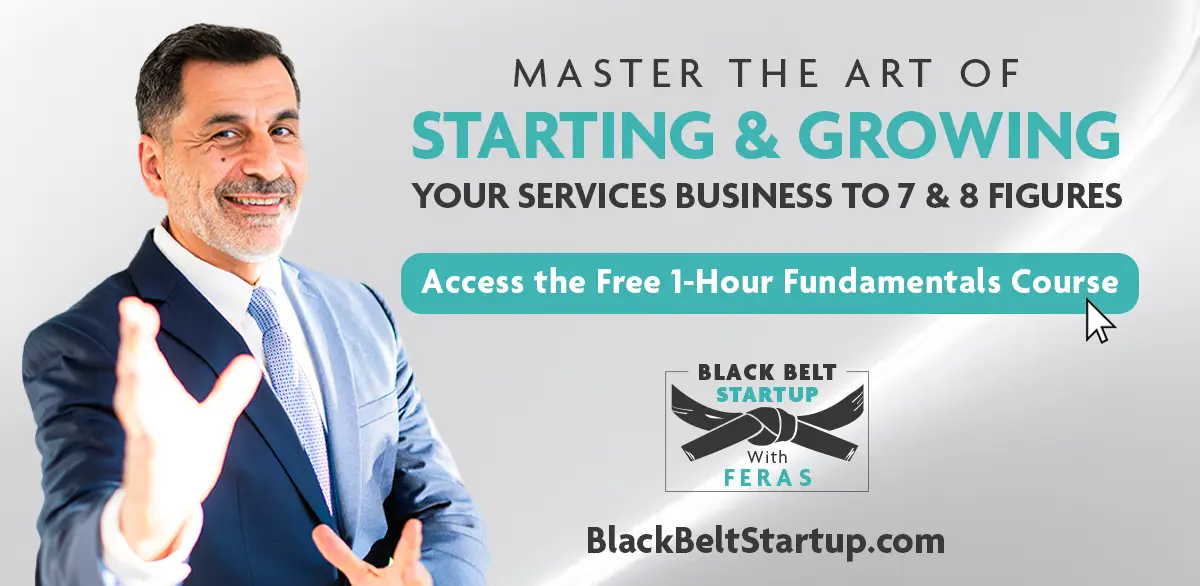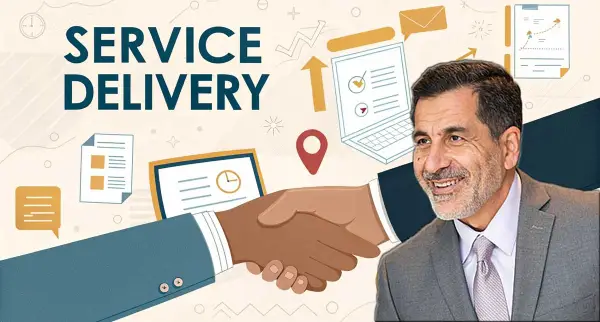Showing Is the Best Telling (Pitching)

Good Morning!
“Guard against distraction.” A business owner shared this with me this week and it stuck.
Some days, staying focused feels like a battle—especially with everything going on in the world. Between the headlines and the endless scroll, it’s easy to get pulled off course. I’m not saying ignore what’s happening. Being engaged with the issues and causes that matter to you is important. But don’t let it take over your time or your mind. As your business becomes more profitable, you’ll be in a stronger position to support the causes you care about—not just with your voice, but with real resources and influence.
Let’s keep moving forward.
On the Mat
- Demoing a Service
- Can I Become a Millionaire?
- Make Decisions Fast, But Not Too Fast
- How to Master Client Value Delivery
Let's Train
Demoing a Service
When we think of demos, our minds usually go to software: log in, click around, show the dashboard.
But if you run a service business, you might assume you don’t have anything to “demo.” After all, you’re not selling a product—you’re selling your time, insight, or execution.
That’s precisely why a demo matters.
A service demo isn’t about showing off; it’s about removing friction. It gives your lead something they can see, feel, and understand. It bridges the gap between “sounds good” and “I get it.”
As a matter of fact, data shows that prospects who engaged with demos have a 3x higher conversion rates than the average (according to a Storylane report).
Service-based founders often ask me: “But what would I even demo?”
There are four ways to approach this:
- Software-adjacent demos: If you implement tools (e.g. analytics, CRM, marketing platforms), walk them through your setup process or a sandbox view.
- Process-based demos: If your work happens behind the scenes (strategy, operations, performance), show your frameworks, dashboards, or a real deliverable (with client info anonymized).
- Coaching/advisory demos: Offer a brief diagnostic, worksheet, or live insight session to simulate what working together feels like.
- Productized service demos: If you sell standardized offerings (audits, workshops, templates), preview a timeline, toolset, or outcome from past clients.
If your service doesn’t lend itself to any of the above categories, show them your portfolio of “before and after”, or walk them through a success story (problem -> approach -> solution) or find creative ways to demonstrate how you add value and help clients, increase revenue, save costs or get some peace of mind.
The goal isn’t to give away the farm. It’s to lower uncertainty. You’re helping the client picture what their world looks like after hiring you—and that makes buying easier.
One note: the best demos are interactive. They’re not polished webinars or slide decks. They’re learning conversations.
In short: a great demo moves your service from “trust me” to “see for yourself.”
I break this down further here.
Ask Feras Recaps
"If I’m making $120K/year, can I become a multimillionaire?"
I get asked some version of this question fairly often—and the short answer is:
Yes. But not the way most people think.
It’s not just about the top line (your salary or income).
It’s about the bottom line—what you keep, save, and invest.
If you’re disciplined and save a good chunk of that $120K, invest it consistently (not emotionally), and stay the course—you can absolutely get there over time.
Now… starting your own business? Also a path.
But here’s the reality:
To get to 7-figures in revenue—and then to make and actually keep 7 figures in profit—takes years of hard work, long nights, and serious commitment.
(Despite what the YouTube thumbnails promise. 😄)
It took me several years to hit 7 figures in revenue in my first business.
The second business? About half the time—because I had learned how to do things more efficiently and had built a network.
But in both cases, I didn’t do it alone.
I had great co-founders who worked just as hard—and we built teams of A-players who fueled our growth.
Curious to hear from others:
Do you think someone earning $100–$150K/year can realistically become a multimillionaire without starting a business?
Or is entrepreneurship the only path?
* Some details have been changed to protect privacy.
You Might Like This
Decisions, decisions.
In some sense, all businesses are decision making machines. The founder decides that there's a problem to solve and then begins deciding how to solve it. For the lifetime of the company, it will continue to make small and big decisions as it refines or expands the problems it's solving and solutions it's offering.
Rapid decision making is what this article in Entrepreneur magazine puts forward as the key to business success. The author further notes that smaller companies have an advantage over larger enterprises in the sense of being able to make decisions more nimbly.
My own guidance on decision making mostly aligns with the author's, with perhaps a bit more emphasis on doing your homework before making decisions and taking risks.
Analysis paralysis? No, of course not.
Quick decisions? Yes, reasonably quick, but not before some due diligence, including input from advisors. Make sure your decisions are researched and your risks are calculated. As a founder of a small, new company, you can indeed make decisions more quickly, but you also may not be able to afford too many bad ones.
Sharpen Your Blade
This took 4 months. A lot of deep work (and more rewrites than I care to admit!).
What came out? 15 articles, 9 videos.
All designed with one goal: to help you deliver exceptional service to your clients—without burning out, bottlenecking, or breaking your own process.
Because let’s be honest…
Client delivery isn’t just about doing the work in a vacuum.
It’s about handling last-minute feedback, vague expectations, quiet clients, chaotic timelines and still showing up as the expert.
If you’re a consultant, creative, coach, or service provider, this might be the most important thing I’ve built for you.
Inside the toolkit, you’ll learn about:
- Project planning & execution strategies
- Managing client expectations
- Effective client communication
- Client onboarding process
- Service delivery framework
- Project retrospective
- Measuring client satisfaction
- How to establish relationships with clients
- Handling difficult clients
- Collecting case studies & testimonials
- Project time management
- Task prioritization
- The art of delegation
- Managing remote teams
- Technology for consultants and service providers
Subscribe to the Black Belt Startup Newsletter
Weekly, 5-minute insights to help you escape the 9–5, land your first clients, and grow a thriving business.

